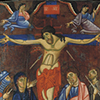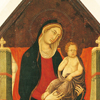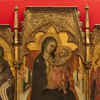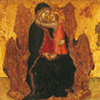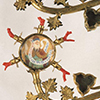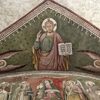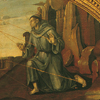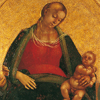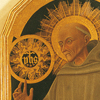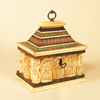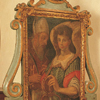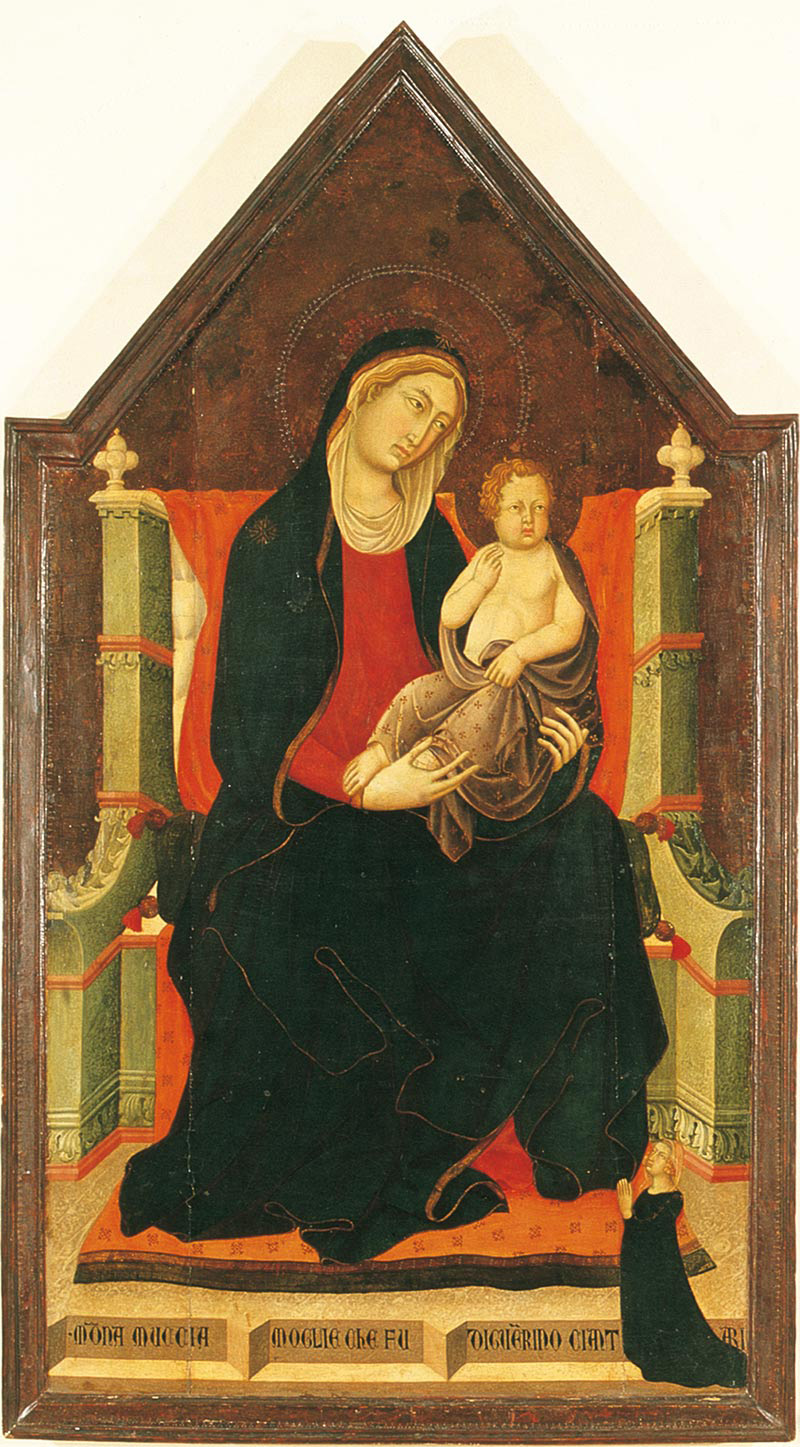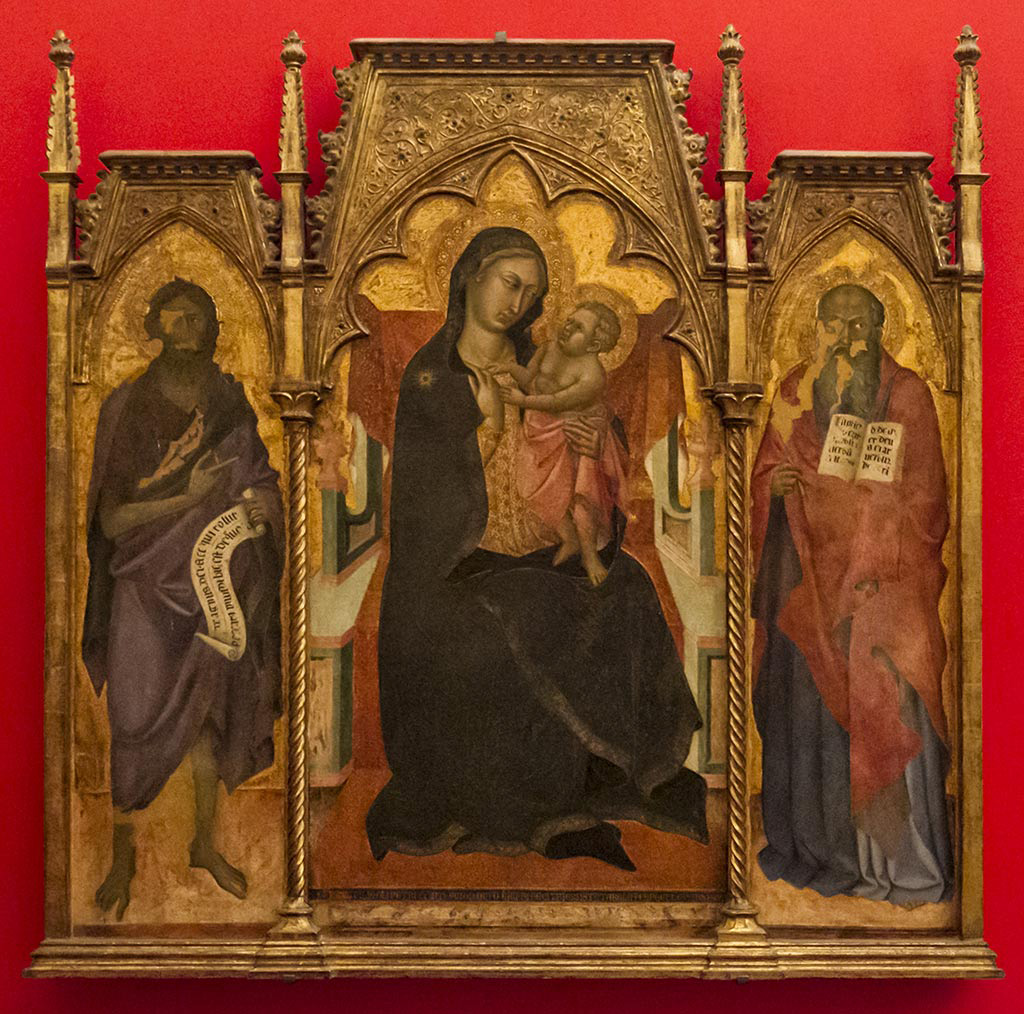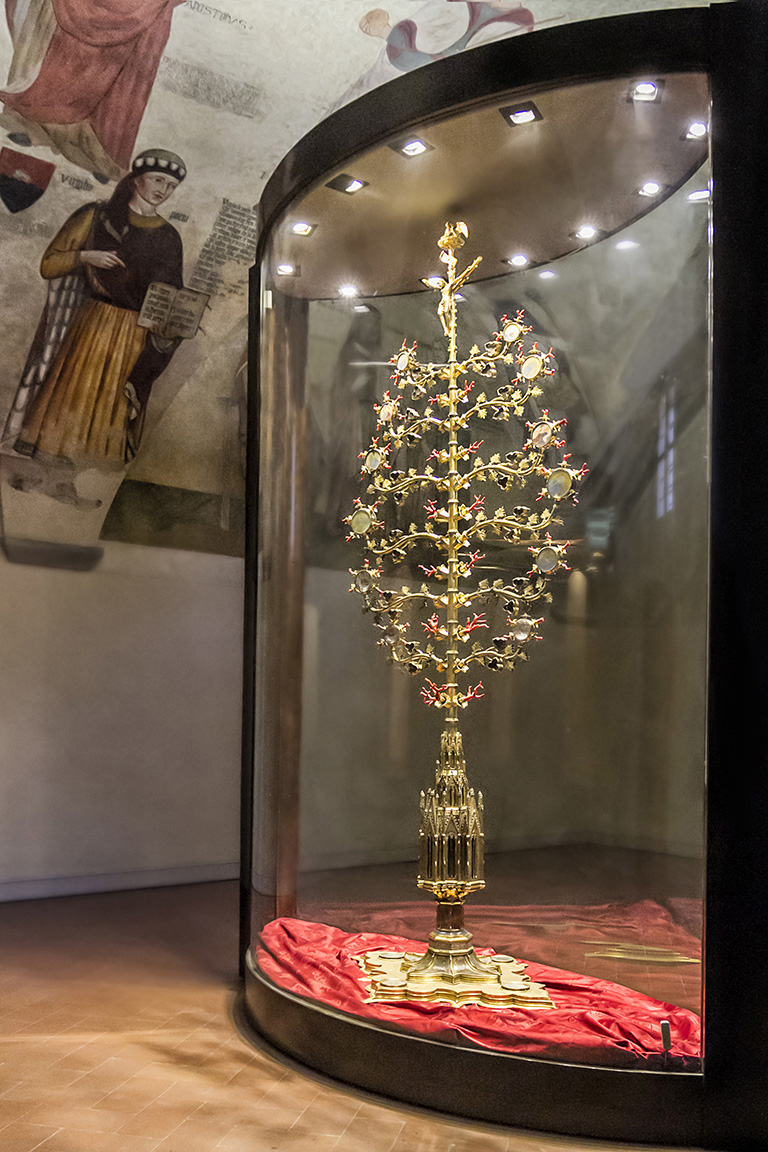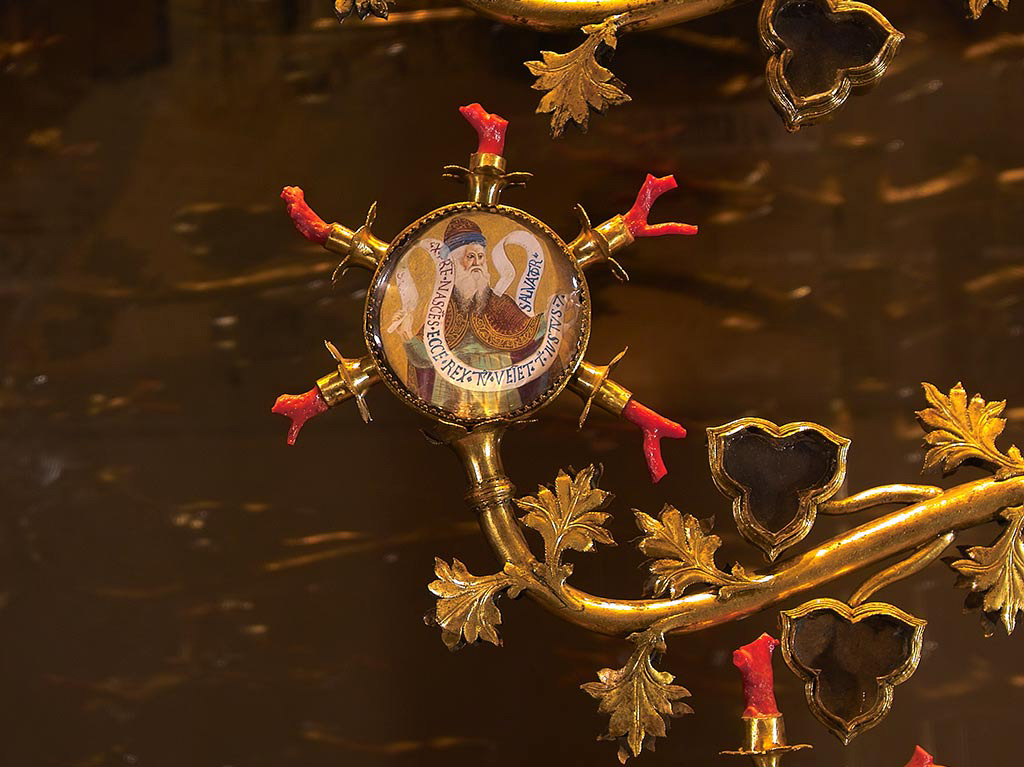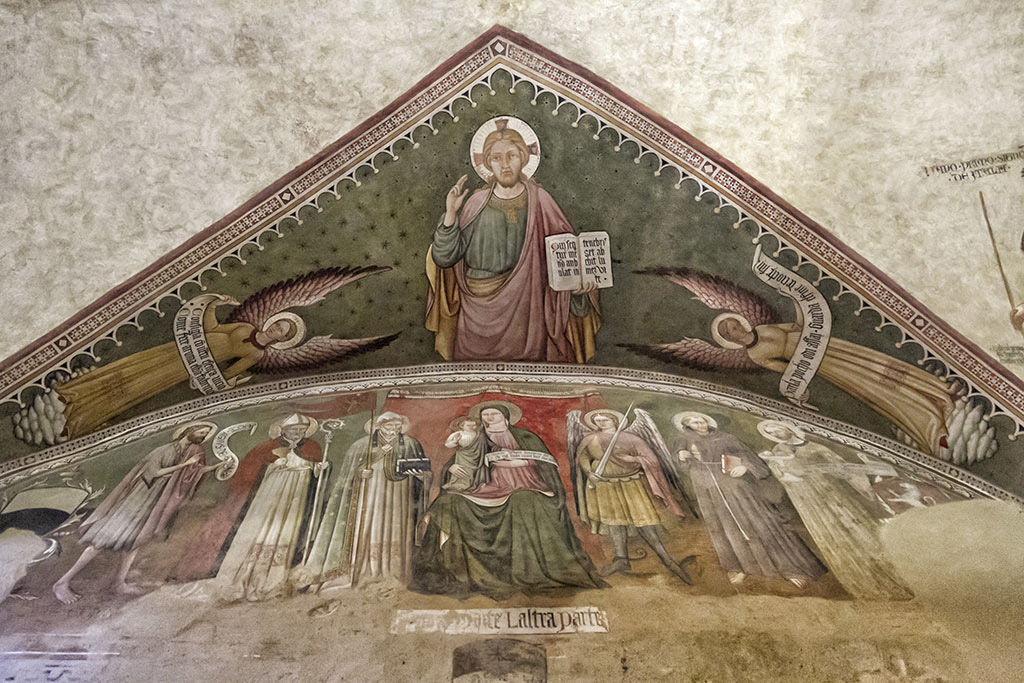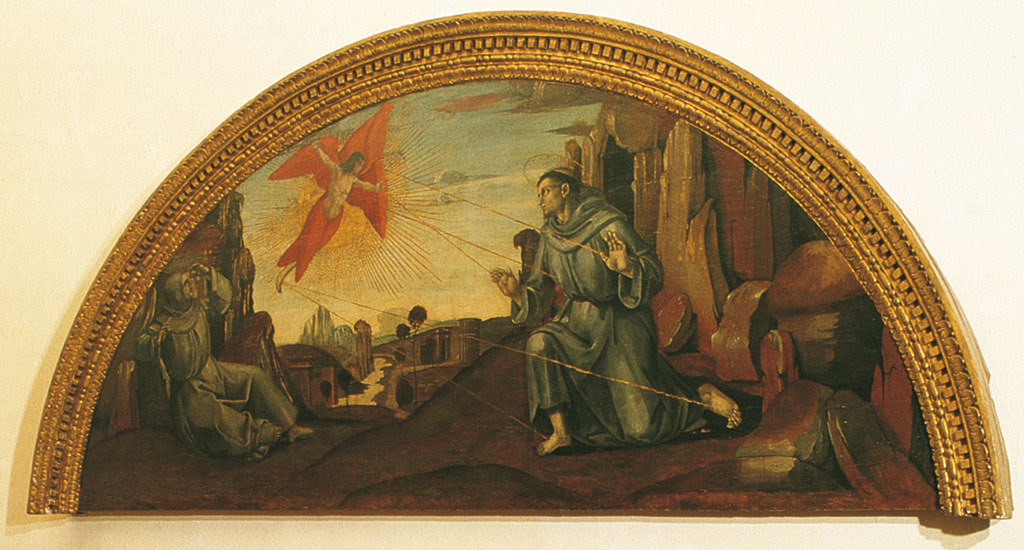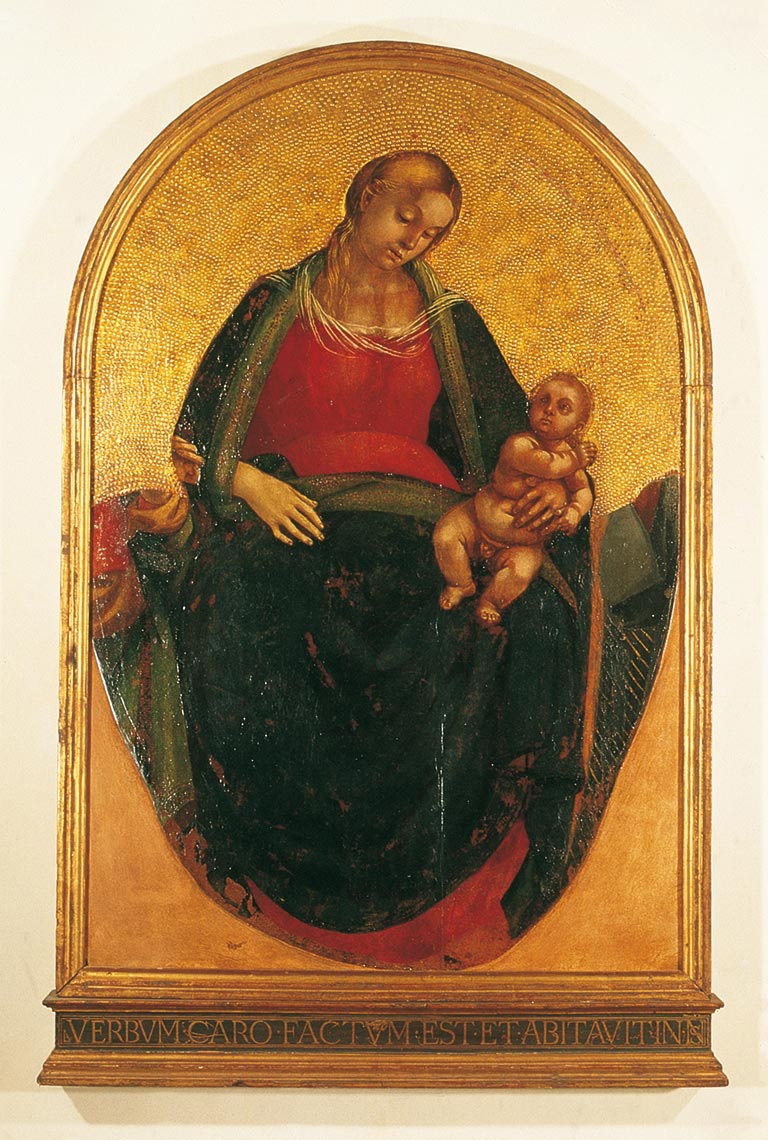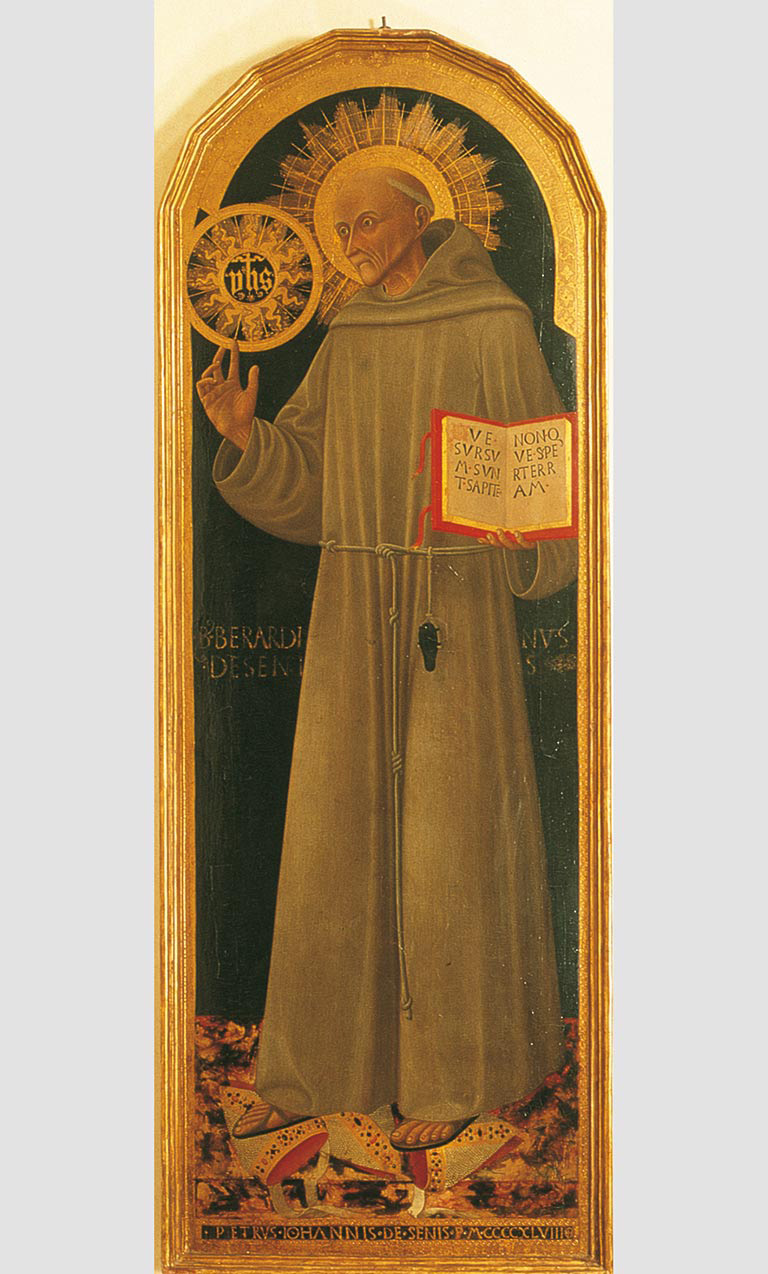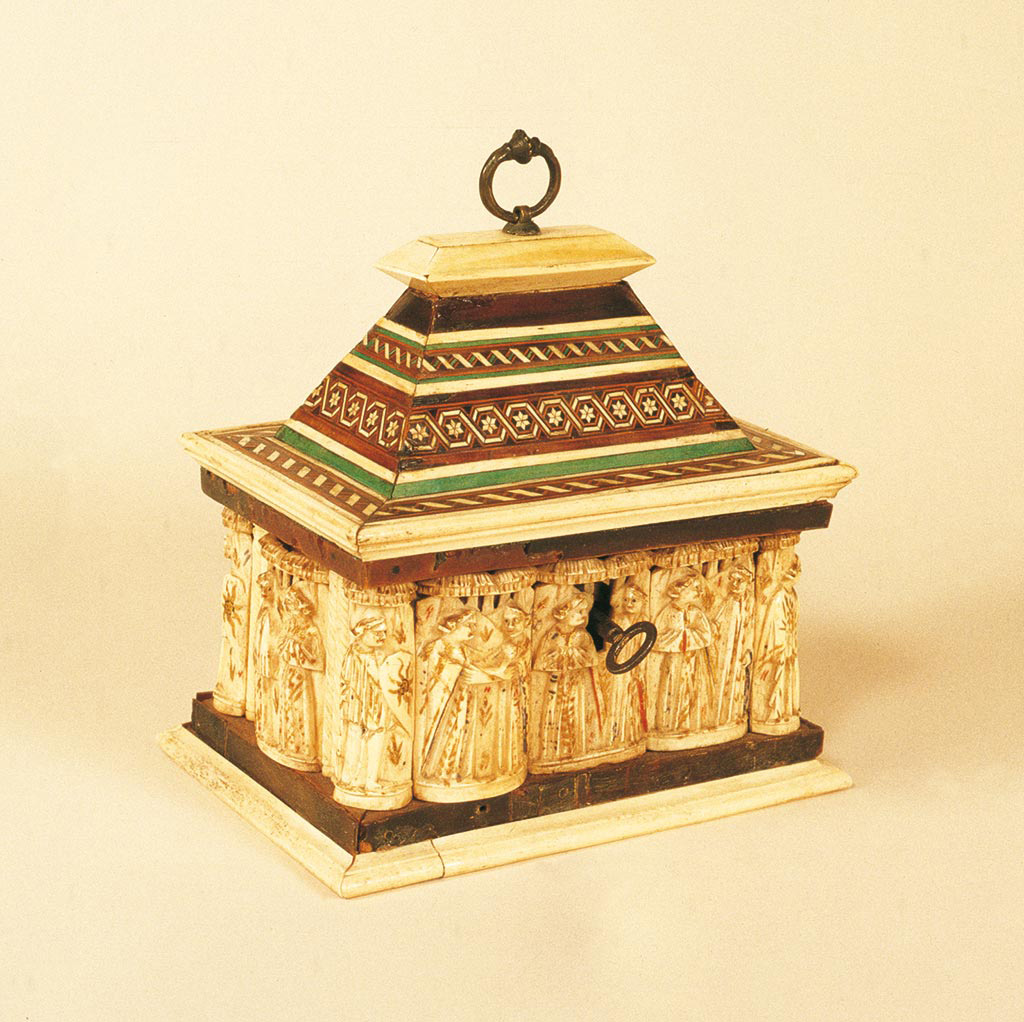#5 Golden Tree
The Tree of Life or Golden Tree, or even Tree of Love stands in its almond shaped window at the center of the Museum of Lucignano, the spiritual center of the town. The Tree is a large reliquary: the small trefoil hanging in pairs on each of its twelve branches are shrines that once retained Franciscan relics and fragments of the Cross of Christ. It belongs to the type of phytomorphic reliquaries, namely that reproduce vegetable forms. Although very common in ancient times, today there remain only a few specimens of this type and, among these, the one of Lucignano stands for grandeur, complexity and value.
As stated in a long inscription that runs along the foot of the Tree, the beginning of the work dates back to 1350. Nevertheless, it was completed only in 1471, 120 years later, by the master goldsmith Gabriello di Antonio from Siena.
The tree contains, in its tripartite morphological structure (root, trunk and crown), the metaphor of the life of Christ in three different phases: birth, passion and glory, as it is developed in the Lignum vitae, a mystical poem by Bonaventura da Bagnoregio (1260). The quatrefoil base supports the drum, on which are grafted first a small temple in Gothic style, then the twelve branches and finally, on the top of the Tree, a crucified Christ and a pelican, the Christological symbol of the animal that injures itself to death to feed its children.
The medallions that decorate the branches contain miniatures on parchment depicting the prophets, while on the back are characters of the New Testament realized on embossed silver and enamel.
The tree was originally stored in a wooden cabinet painted, according to a contract still preserved in the Archives, by the painter Luca Signorelli from Cortona, one of the most prestigious artists of the time.
On the night of September 28th 1914, the tree was stolen and it was found again - disassembled and partially damaged - only in November 1917 in a cave near Sarteano, so that it was soon restored by the Opificio delle Pietre Dure in Florence.
The Tree, symbol of divine love, has originated a legend, according to which lovers exchanging vows in front of its branches receive good luck.
This legend gave the idea for two initiatives promoted by the Town Council: "Signs of Love", that since 2002 takes place on February 14th, Valentine's day, and the more recent "Feast of the Spouses", the first Sunday of September, born from the partnership between Lucignano, his Golden Tree and the famous Japanese stylist of wedding dresses Yumi Katsura.
The tree also witnessed the travel / research of the two protagonists of Certified Copy, a film by Abbas Kiarostami (2010).
